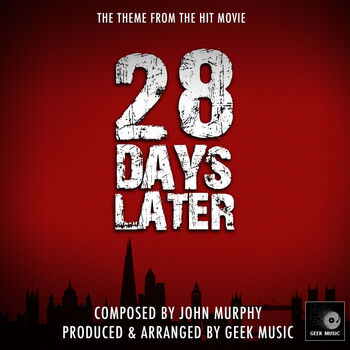
Garland completed a 50 page draft script for McDonald, who immediately sent it to Danny Boyle. ‘In 28 Days Later,’ he said in one interview, ‘it was really to facilitate a lift from Day of the Triffids – where a guy goes into hospital and the world is normal, then comes out and everything is turned on its head.’ Garland never hesitated to admit the debt his screenplay owed to Wyndham’s novel. It enables the protagonist to wake in exactly the same position as his audience, and to discover and explore his brave new world at precisely the same pace as them. What’s interesting about this massive appropriation of Wyndham’s novel is that Garland is not the only writer to do it: Robert Kirkman’s popular zombie comic book and television drama The Walking Dead stole the exact same sequence for exactly the same purpose. Of course 28 Days Later ultimately took more than inspiration from The Day of the Triffids it took its entire first act, in which a protagonist wakes in a deserted hospital and discovers that the world ended while he was asleep. It’s a form of science fiction that Wyndham was particularly skilled at developing through classic novels like The Day of the Triffids (1951) and The Kraken Wakes (1953). Rather, the world simply slips away into ruin, leaving the survivors to wander through its wreckage in a sombre, melancholic fashion. These ‘quiet apocalypses’ generally don’t involve a nuclear explosion or massively traumatic crisis. The John Wyndham reference is a telling one, as despite the zombies 28 Days Later falls most comfortably into a very British sub-genre of apocalyptic science fiction. ‘I see it as a sort of oblique war film,’ said Garland, ‘relayed via seventies zombie movies and British science fiction literature, particularly J.G. What Garland delivered was a 50/50 blend of American-style zombies and a very British sense of quiet, dignified apocalypse. Wells, The Time Machine, something set in Britain.’ When he said that he’d always wanted to do science fiction, I encouraged him to look to H.G.

‘Alex is just a natural story teller,’ said McDonald, ‘and I wanted to make a film which had the same energy and excitement of reading one of his books. The film initially came out of conversations between Boyle’s regular producer Andrew McDonald and author Alex Garland, whose 1996 novel The Beach had inspired Boyle’s most recent film. So after the domestic thrills of Shallow Grave (1994), the heroin-injected drama of Trainspotting (1996), the surreal comedy of A Life Less Ordinary (1997) and the Hollywood-funded action of The Beach (2000), a zombie movie was just another unexpected jump from a filmmaker forging a career out of unexpected jumps.

As viewers we’re generally used to filmmakers staking a fairly broad claim on particular genres, however Boyle remains one of the few directors working today who jumps effortlessly from one style of film to another. It is in many ways a surprising film, because its director – Danny Boyle – demonstrated no science fiction leanings prior to making it.

A bicycle courier named Jim (Cillian Murphy) wakes from a coma in a London hospital and is forced to negotiate a dangerous new world where healthy human beings are in short supply and the cannibalistic, frenzied infected ones are around every corner. The film is set in a post-apocalyptic England a month after a viral outbreak has decimated the population, devastated society and thrown the entire island of Great Britain under an international quarantine. On the other hand it demonstrates pretty much all of the tropes and traditions of the sub-genre, leading one to question if it looks like a zombie movie and feels like a zombie movie, then what else can it possibly be? On a technical level it’s patently not a zombie movie, because it doesn’t actually feature any zombies – not in the strict George A. When is a zombie movie not a zombie movie? It’s a question that quite a lot of critics and viewer may have asked themselves when they saw Danny Boyle’s 28 Days Later…, released in the UK in October 2002 before opening internationally over the subsequent twelve months (the USA got it in July 2003, Australia in September).


 0 kommentar(er)
0 kommentar(er)
